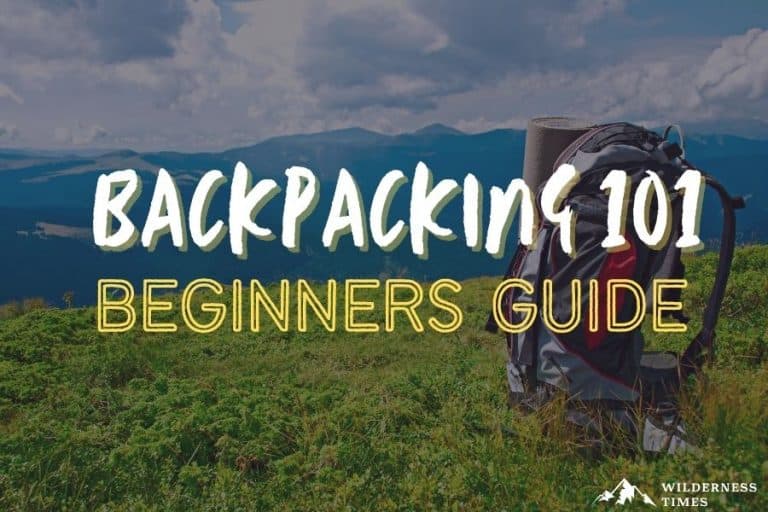Ready to step up your camping game? How about traveling through the wilderness and setting up a camp on a different spot each day?
Then you definitely need to try out backpacking.
Backpacking is practically a return to life’s bare essentials. It lets you discover new places and enjoy the simplicity of life, even if just for a few days.
Intrigued? Keep reading to learn more about the backpacking adventure.
Table of Contents
ToggleWhat is Backpacking?
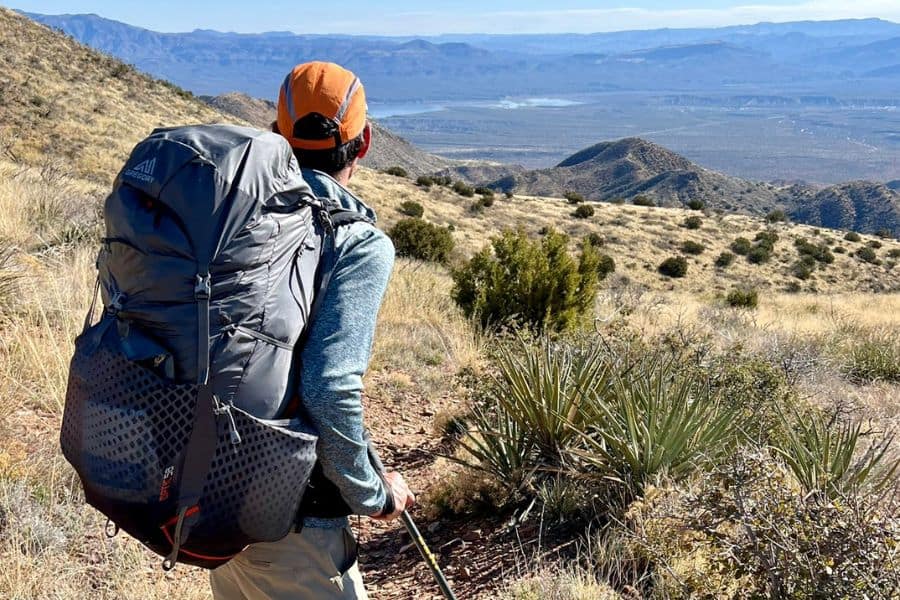
According to Britannica, backpacking is a recreational activity of hiking while carrying clothing, food, and camping equipment in a pack on the back.
Pretty rudimentary, but accurate. Backpacking means heading into the wilderness with your bare necessities on your back. These things include your shelter, clothing, food and drink.
Staying self-sufficient on the trail requires some pre-planning.
You need to get acquainted with the route prior to setting foot outdoors, as well as find potential camping locations. This will make your trip much more enjoyable.
Difference Between Backpacking and Hiking
These two activities aren’t much different.
Hiking is the act of walking through nature through a man-made trail or unknown path (though there are many different types of hiking).
Backpacking is essentially the same, but it’s done over the course of a longer period of time.
This means carrying around a lot more gear in larger packs.
Difference Between Backpacking and Wild Camping
Now, these two terms aren’t used interchangeably, but can sometimes overlap.
By wild camping, we consider every type of camping done outside of designated campgrounds. You’re sleeping in the wilderness in the true sense of the word.
When you’re backpacking, you often resort to wild camping when passing through secluded areas.
Just keep in mind that wild camping is often prohibited in certain areas, such as national parks.
Check with local authorities before setting up a camp for the night.
Types of Backpacking
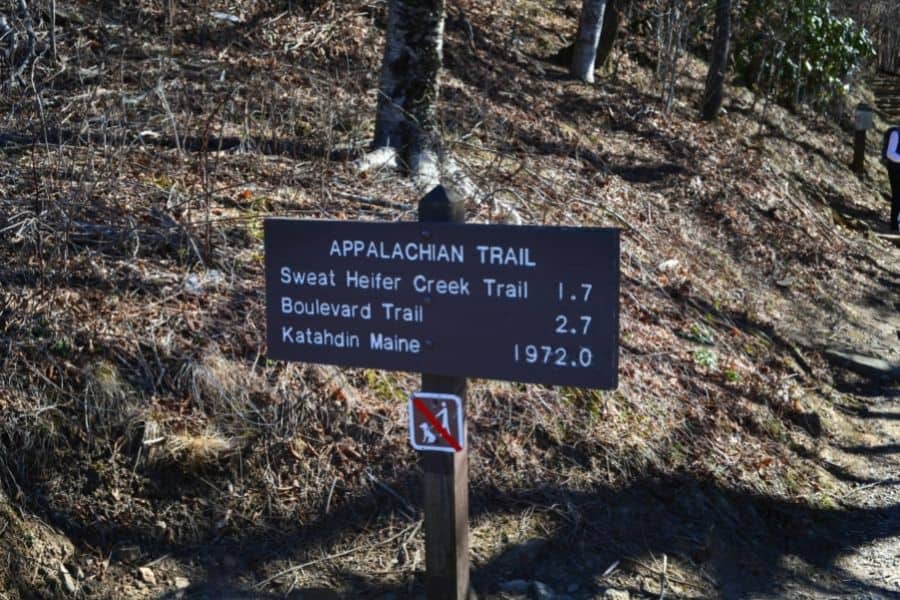
Backpacking is a pretty broad term that includes different types of outdoor traveling. In this section we’ll go over some of the different types of backpacking.
Multi-Day Hiking
This is probably the most common type of backpacking. By this term, we consider trails of different lengths, and they can be with the starting and finish points at the same spot, or different locations.
Point-to-Point trails are hikes that start and end in different locations. So for this type of multi-day hike you will need to arrange transportation at the end of your hike or drive a car out there ahead of time to shuttle back to the starting point.
Some of the best multi-day hikes in the US National Parks are:
- Wonderland Trail, Mount Rainier National Park ( 93 miles | 10 days)
- Thunder Lake, Rocky Mountain National Park (11.2 or 22 miles | 2-4 days)
- Rim to Rim, Grand Canyon National Park (24 miles | 4 days)
- The Narrows, Zion National Park (16 miles | 2 days)
- Enchanted Valley, Olympic National Park (26+ miles | 4-5 days)
- Little River Trail, Great Smoky Mountain National Park (12 miles | 2 days)
Thru Hiking
Thru-hiking is traveling a long distance over a long period of time, going from point A to point B. Some of the longest trails can take several months to complete.
One of the most popular long-distance thru-hikes is the. It’s 2,168 miles long and takes about 165 days to complete on average.
Along with the Appalachian Trail, the Pacific Crest Trail and the Continental Divide Trail make the classic trio that every hiker must experience. But there are also shorter thru-hiking trails in the US. Some of the best are:
- Long Trail, Vermont (272 miles | 3-4 weeks)
- Colorado Trail, Colorado (567 miles. | 4-6 weeks)
- Oregon Coast Trail, Oregon (363 miles | 4 weeks)
- Sierra High Route, Sierra Nevada (195 miles | 2-3 weeks)
- Finger Lakes Trail, New York (584 miles | 4-6 weeks)
- John Muir Trail, California (215 miles | 2-3 weeks)
- Superior Hiking Trail, Minnesota (296 miles |3-4 weeks)
- Arizona Trail (800 miles | 6-7 weeks)
Mountaineering Expeditions
Now, this type of backpacking is taking it to a whole nother level. It’s the most challenging type, as it requires you to be self-sufficient, but in an extremely harsh environment – mountains.
In the States, Mount Baker in Washington is considered the perfect place to get into mountaineering. It’s easily accessible yet offers some amazing scenery you only see on TV.
Mount McKinley is another destination that is a great training ground for Alpine expeditions.
As for the UK, the Skye Cuillin Ridge Traverse with 13,000 feet ascent is one of the most famous British trails. This also makes it one of the most challenging trails in the country.
New Variants
Nowadays you can see people enjoying all kinds of backpacking variants.
One such alternative is fastpacking. That’s a merge of trail running and ultralight backpacking. This means covering a long distance over a short period of time, which naturally means you should have as little burden as possible.
Bikepacking, on the other hand, is a combination of mountain biking and backpacking. It also lets you travel fast, but requires more skill.
Riding a bike on harsh terrain is much harder than riding on the street.
In recent years, flashpacking is becoming the new backpacking trend. It basically means traveling with tech gadgets that make your trip easier. By these things I mean laptops, iPods and similar electronics.
Around The World Travel Backpacking
This type of backpacking is often covered in documentaries and travel blogs.
It means traveling long distances on a budget, and exploring different cultures along the way.
Some people indulge in this activity over a long period of time – as much as a year or two.
First-Time Backpacking Tips
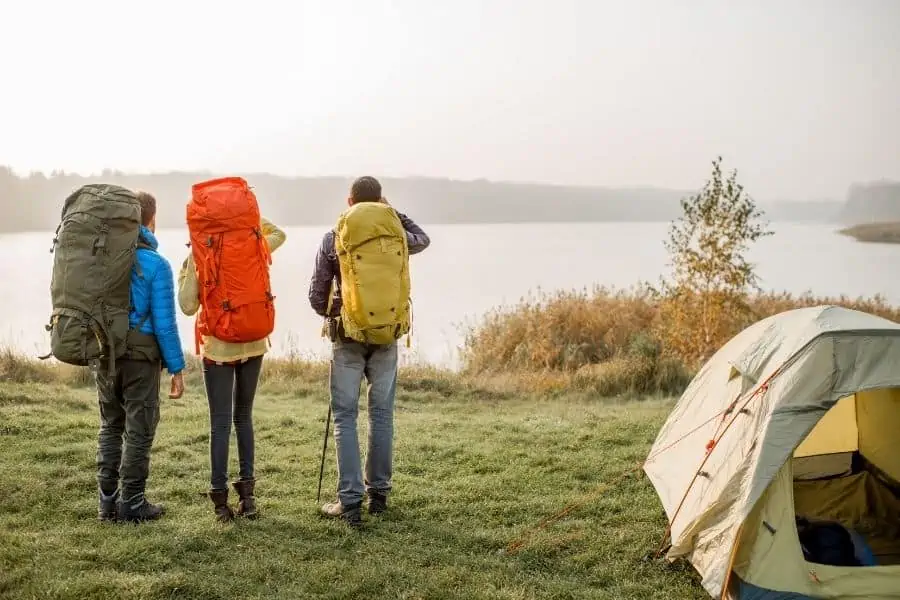
Backpacking for the first time requires some prior knowledge.
Let’s go over the most important things you need to know before hitting the trail.
Backpacking Safety
When you’re out in the wild, there are a few safety rules you need to follow in order to have a secure and enjoyable trip.
Wildlife Safety
First things first, you should always keep a considerate distance away from wildlife.
This is especially important if the animals are with their younglings. Regardless of whether it’s a bear or a fox, every mother is willing to do anything to protect their child.
Since wildlife is attracted to the scent of food, keeping it packed and secured is crucial in order to keep the animals away from your camp. Use Ziploc bags and stuff sacks to keep the smell away. Hanging them from a tree branch is also a good way to keep the food protected.
If you’re camping in bear country, make sure to be property acquainted with bear safety tips. While bears don’t generally care much about humans, they might approach you for different reasons.
Of course, such an encounter can be extremely dangerous, so you need to have a tool in bear spray to defend yourself. When a bear inhales the content of the spray, its lungs get irritated, which distracts the bear from its charge. This gives you enough time to distance yourself from the animal.
Familiarize yourself with your backpacking gear
Before you head out for the wilderness, familiarize yourself with your gear.
Try pitching your tent at home to see which part goes where and if there are any tricky steps you need to practice. The same goes for trying out the new stove and water filter straws.
Knowing the basics of first aid is a must when you’re on a trail. You have to be ready for accidents because the closest ambulance is usually miles away.
Research Your Route
The same goes for your trail. Research your route using Google Maps, the US Forest Service, the National Parks Service, or an app like AllTrails.
Also, research possible alternatives before heading out. Preparation is key when planning your route.
You should do ensure that you have offline maps, GPS coordinates, and a traditional paper map.
You’ll also want to bring along a compass. You can never know when a battery can betray you, so you need a back up method of orientation.
Start Small
Don’t think you can go out and and easily hike 25+ miles per day.
It’s best to consider your skill and hiking fitness level, along with anyone you are backpacking with.
And even if you are super fit, it’s best to plan a shorter backpacking trip first and work up to longer more advanced outings.
Backpacking Ethics
I’m sure you’ve heard about Leave No Trail principles. These are a set of outdoor ethics that promote the conservation of the wilderness by leaving minimal impact on the environment after you leave.
These principles are:
- plan ahead and prepare,
- travel and camp on durable surfaces,
- dispose of waste properly,
- leave what you find,
- minimize campfire impacts,
- respect wildlife,
- be considerate of other visitors.
These principles are easy to remember, so there’s no excuse for not knowing or following them. Leaving nothing except footprints is easy, and it assures nature stays the same for your next visit. (More on Eco Camping)
Backpacking Classes
No matter if you’re new or an experienced backpacker, there’s always something new to be learned.
If you want to be a bit more prepared for your next trip, consider taking backpacking classes.
Nowadays there are tons of courses of different difficulties available on the subject. They cover topics on planning, gear and tips on staying safe and comfortable on an overnight trip.
From encountering wildlife and proper ways to behave around them, to making alternative shelters, these courses will provide you with the knowledge and skills to have a successful backpacking trip.
Packing for Backpacking
Traveling on your feet means carrying everything on your back.
But in order to move long distances fast, you need to stay as light as possible. Your gear needs to be both featherweight and compact to fit into one pack.More often than not, packing light means sacrificing comfort for weight.
This means bringing small lightweight tents either a 1-person tent or a 2-person tent, and wearing most clothes on you.
Planning food is especially important. You can forget about perishable food because bringing a cooler is off the table. Instead, you’ll have to resort to protein bars, jerky, and similar snacks to gain your fuel.
FAQ
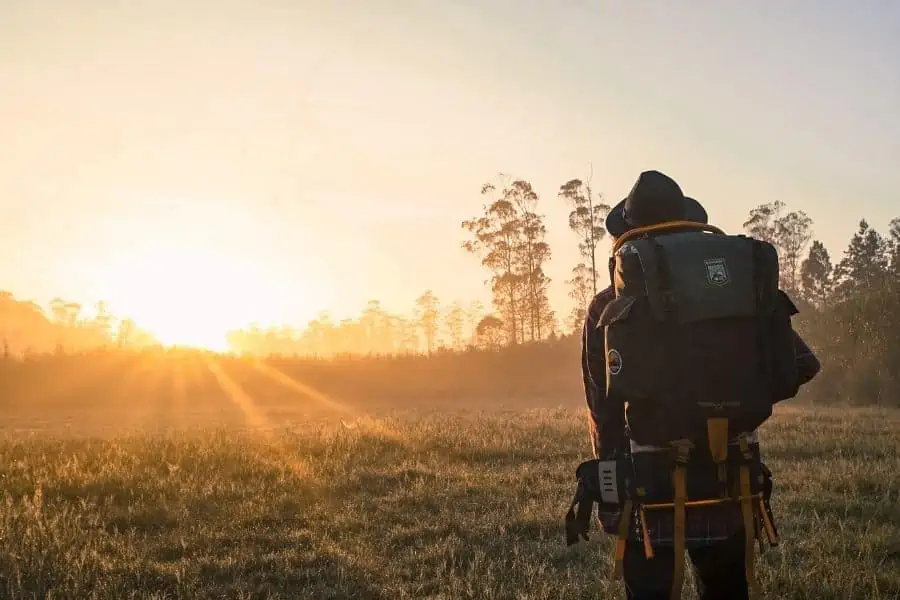
Still have some questions about backpacking? In this section, I’ll answer some of the most common things people wonder about this outdoor activity.
How is Backpacking Different from Trekking
Trekking is a difficult physical activity, as it involves taking a route over rough terrain. It’s named after trekking poles because they’re usually necessary for easier walking over a difficult trail.
Since trek routes usually take several weeks, months and even years, it’s safe to say that a trekking expedition can also be a backpacking one. But that’s not always the case. Some trekking routes involve staying in proper accommodations and even eating out.
In conclusion, these two activities are different, but can overlap. Backpacking is a way of traveling self-sufficiently, while trekking is long-distance traveling over harsh terrain.
Are There Backpacking Classes?
Yes, there are many backpacking courses you can take, both online and in-person.
With different difficulties available, these classes can be helpful for both beginner and expert backpackers willing to improve their skills for the upcoming trip.
What Gear Do You Need for Backpacking?
For backpacking, you need only essentials. And even those essentials need to be light and compact.
If you’re backpacking with a group, consider taking less tents and splitting up the parts amongst the group to save packing weight and space.
As for your pack, a 30 to 50 liter is a decent size if you’re going on a trip that last a couple of days. Naturally, the longer you stay, the more stuff you’ll need.
But there’s an upper limit. Never carry more than 30% of your body weight.
When it comes to sleeping bags or quilts, your options are either down or synthetic. And in this case, synthetic has a slight advantage. While down might be lighter and warmer, it loses its insulation as soon as it gets wet. Synthetic, on the other hand, keeps you warm even while damp.
First aid and tent repair kits are also an essential part of backpacking gear.
These situational sets help you deal with accidents on the go, so that you can continue your travel.
What Clothes To Bring Backpacking?
Starting with the socks, it’s important to wear something that will keep your feet cozy and dry. Merino wool is the best material out there for backpacking.
Cotton, on the other hand, is a bad choice as it’s cold and dries down slowly.
You want to bring only a few pieces of clothing to alternate between. This means whatever you bring needs to be suitable for different situations. Synthetic material is great here as it’s moisture-wicking and keeps you warm in cold weather.
You’ll need to dress in layers. Here’s what I mean:
- Second-skin base layer – nights and mornings can be really cold. These layers keep you warm while also keeping sweat away from your body.
- Middle layer – t-shirts and hiking pants or leggings that can withstand wear and tear
- Outer layer – protection from both wind and rain, as well as a warm jacket for when the temperature drops
Consider bringing practical pieces of clothing, such as pants and jackets that feature zippers to turn into shorts and vests.
Layering clothes is great because it lets you adapt to the change in weather. As the temperature reaches its peak point at midday, you can remove the top layer to let your skin breathe. But as it gets colder later in the day, you can also easily add more clothing to warm up.
What is Wild Camping?
By wild camping we usually refer to any sort of camping outside of a designated campground.
This could be on a beach, in the mountains or in the middle of a field in a secluded area.
In Conclusion
The beauty of backpacking lies in simplicity and flexibility.
With just your bare necessities packed on your back, you get to travel long distances and enjoy the best nature has to offer.
Next up: Overnight Backpacking Checklist (Downloadable & Printable PDF)


